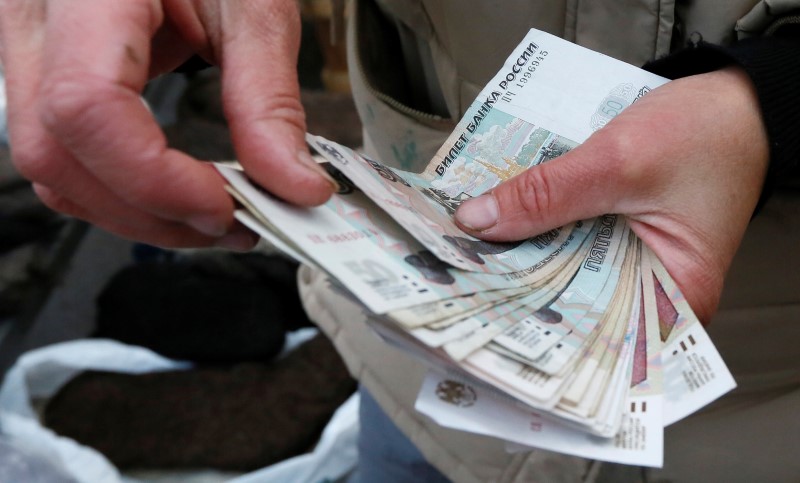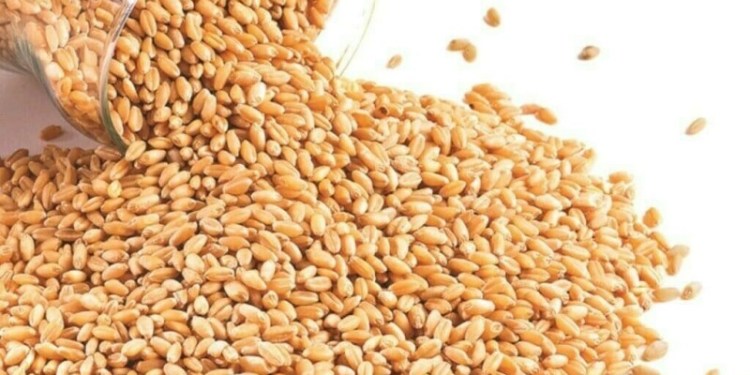 © Reuters. FILE PHOTO: Vendor counts Russian rouble banknotes at street market in Krasnoyarsk
© Reuters. FILE PHOTO: Vendor counts Russian rouble banknotes at street market in KrasnoyarskBy Zlata Garasyuta and Andrey Ostroukh
MOSCOW (Reuters) – The latest round of U.S. sanctions against Moscow will limit scope for rate cuts in Russia as well as room for economic recovery, a Reuters monthly poll of 23 analysts and economists suggested.
The new round of sanctions imposed on Russia by the United States in April was a game-changer for the central bank, dashing its imminent plans to proceed with rate cuts that are designed to prop-up sluggish economic growth.
The sanctions, which targeted a number of Russian individuals and companies, hit the Russian market hard, sending the rouble to its weakest level since 2016.
Taking into account the central bank’s signal that it will not cut the key rate as low as previously thought, 11 out of 20 analysts and economists who gave their rate forecasts said they expected the bank to lower the rate to 7.00 percent at its next board meeting in June from 7.25 percent at present.
The rate level by the end of 2018 is now seen at 6.75 percent versus 6.50 percent predicted by the previous poll a month ago.
There is a chance the central bank could trim rates in June but that will depend on whether the rouble recovers further, given that it is still some 10 percent weaker versus the dollar than it was at the end of March, said Christopher Shiells, an analyst at Informa Global Markets.
Still, inflation is seen steadily low at 3.4 percent this year, below the central bank’s target of 4.0 percent, the poll showed.
The latest poll also indicated the consensus forecast for 2018 gross domestic product growth lowered to 1.7 percent from 1.8 percent one month earlier. Forecasts for 2018 economic growth ranged from 1.0 percent to 2.5 percent.
“We found the general consensus to be that the new sanctions would not destabilize the macroeconomic situation,” Morgan Stanley (NYSE:) analysts said.
“However, we see some downside risks to our 2.3 percent growth forecast, given that sanctions would affect business confidence and reduce private sector investment, increase the cost of funding and turn the central bank more cautious,” they said.
The lower growth rate is seen as a consequence of the sanctions that sent shares in four publicly listed companies with links to those sanctioned individuals plummeting both in Russia and elsewhere: Rusal (HK:), EN+ Group
“Sanctions have a direct impact on reduction of production at Rusal factories, reduction in electricity production,” said Kirill Tremasov, a former economy ministry official and now head of research at Loko-Invest.
“The introduction of sanctions drastically raised uncertainty for the business environment in the Russian economy. Threats of counter-measures also contribute to this,” said Tremasov.
The rouble rate is also on track to feel pressure from sanctions. In a year from now, the rouble is seen at 60.30 against the dollar versus a level of 57.35 per dollar predicted a month ago.
On Saturday, a rare working day for the Moscow Exchange, the rouble traded at 62.22 versus the dollar
Source: Investing.com


























